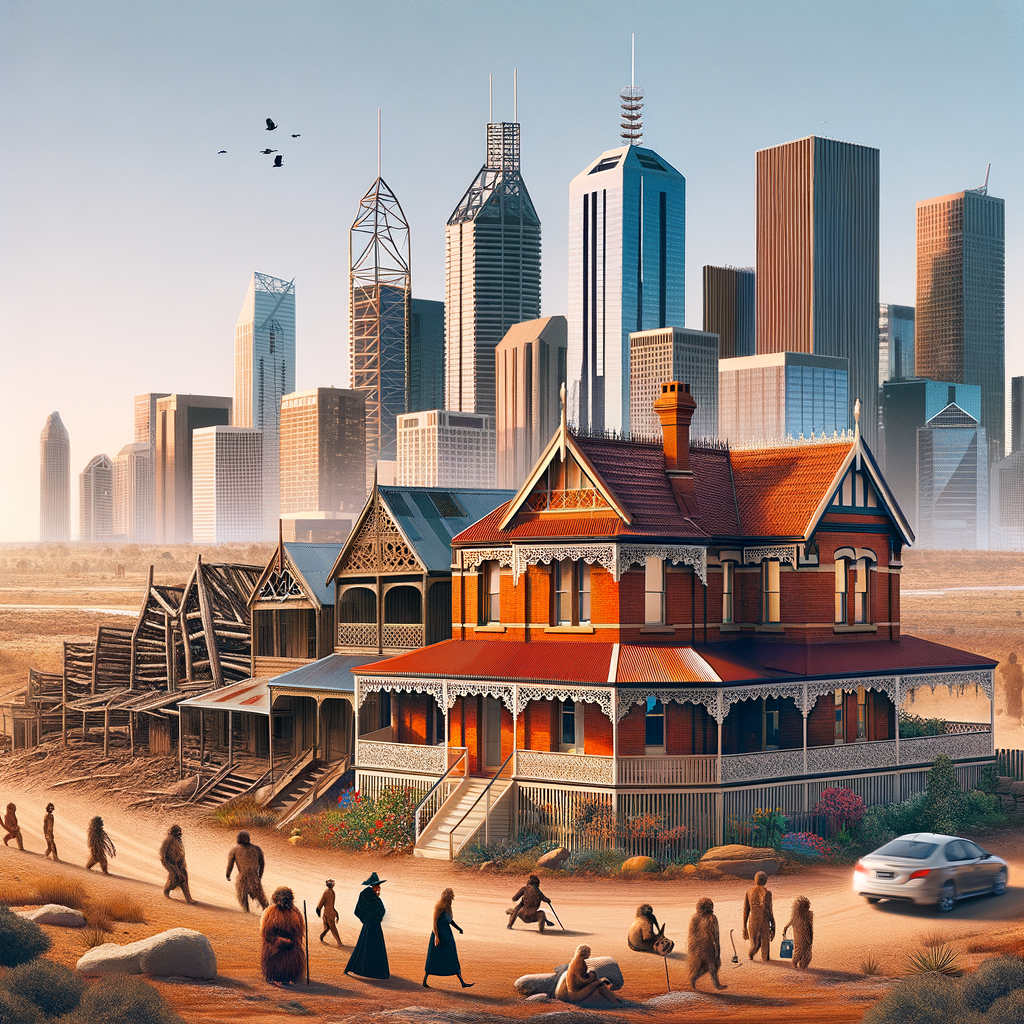Physical Address
304 North Cardinal St.
Dorchester Center, MA 02124
Physical Address
304 North Cardinal St.
Dorchester Center, MA 02124

The architectural landscape of Australia is a rich tapestry of styles and influences, each telling a story about the country’s history, culture, and progression. From the Indigenous structures that have stood for thousands of years to the modern designs that dot cityscapes today, Australian architecture has evolved significantly over time. This article explores this evolution in detail.
The first chapter in the story of Australian architecture begins with its Indigenous people. Aboriginal architecture dates back over 60,000 years and includes a variety of structures such as huts, shelters, and complex aquaculture systems. These constructions were typically made from natural materials like bark, grasses, and branches. The Gunyah shelter and fish traps at Brewarrina are prime examples of this ancient architectural style.
With the arrival of European settlers in 1788 came new architectural styles. Early colonial buildings were simple and functional due to limited resources and skills. Convict huts and military barracks were among the earliest forms of colonial architecture.
As more free settlers arrived during the mid-19th century, they brought with them Victorian architectural styles from Britain. This era saw the construction of grand public buildings like Sydney’s Queen Victoria Building and Melbourne’s Royal Exhibition Building.
Around Federation in 1901, a unique Australian style began to emerge. Federation architecture was characterised by red brickwork, intricate timber detailing, stained glass windows, verandas with decorative iron lacework – all features that celebrated Australia’s climate and lifestyle.
The period between World War I & II saw a shift towards more functional and simple designs, influenced by the Art Deco and Modernist movements. Notable examples include Melbourne’s Manchester Unity Building and Sydney’s Anzac Memorial.
In the post-war era, there was a need for mass housing to accommodate returning soldiers and immigrants. This led to the popularity of modernist architecture with its focus on simplicity, functionality, and affordable construction methods. The iconic Sydney Opera House, designed by Jørn Utzon in 1957, is an international symbol of this period.
The late 20th century saw a move towards sustainable and eco-friendly designs. Architects started incorporating energy-efficient features like solar panels, passive cooling systems, rainwater collection systems into their designs. Today’s Australian architecture continues this trend with a focus on sustainable materials and practices.
Australian architecture has come a long way from its Indigenous origins to its current state of innovative design and sustainability. It is a testament to Australia’s rich history and diverse influences that have shaped its architectural landscape over time.